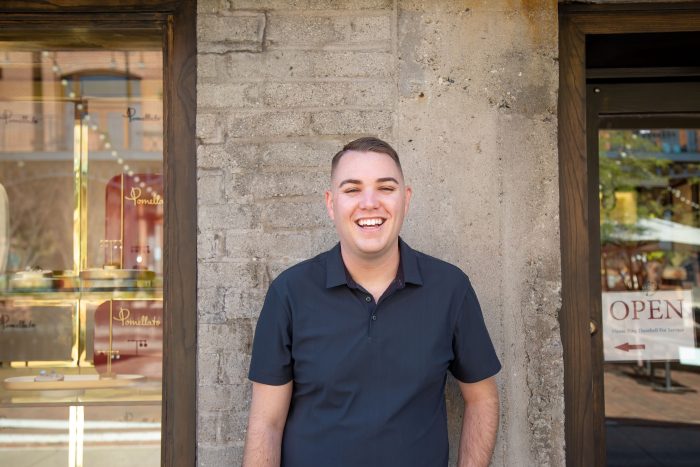The current economic downturn and recent waves of mass layoffs have many of us experiencing more workplace anxiety than ever before. Workplace anxiety can negatively impact your productivity and performance. When not managed well, it can result in fatigue and burnout.
Over the years, I have experienced my fair share of workplace anxiety, fatigue, and burnout. I am a recovering careeraholic, perfectionist, and people pleaser living with multiple mental health challenges. I used to work 80+-hour weeks and flirted daily with fatigue. I eventually experienced burnout.
These days, I more effectively manage my mental health, and I have never felt better. In this article, I share nine strategies that I have learned along the way to mitigate burnout and effectively cope with anxiety in the workplace.
9 Tips To Manage Anxiety In The Workplace
1. Identify your triggers at work.
Start by recognizing your triggers. Identify situations, tasks, or people in your workplace that trigger your anxiety. Personally speaking, I get trigged when people attempt to micromanage me unnecessarily.
Once you identify your anxiety triggers, begin to actively remove the ones that are within your control. I may, for example, need to speak up if I feel someone is micromanaging me. Also, know that you may not be able to remove all your workplace triggers. The next tip will be helpful in those situations.
2. Set and communicate your boundaries at work.
Setting and communicating boundaries can help you manage your triggers and reduce anxiety. Let’s begin with the first step — setting your boundaries. Think about what limits you want to establish to better protect your mental health. One of my own boundaries is not scheduling meetings on the weekends. What new expectations would reduce your workplace anxiety and stress?
Then, communicate — and consistently reinforce — your boundaries. This is especially important if you are new to your organization. If someone violates your boundaries, it is important to remind them of your expectations and enforce them. Consider how you can best communicate your boundaries within your own specific work arrangement.
3. Find productive outlets to relieve anxiety.
Reflect on how you currently manage your workplace anxiety. What additional self-care techniques would be helpful when you feel anxious? I call this loading up your “anti-anxiety toolbox.”
Know that your anti-anxiety tools do not have to be sophisticated. One of my favorite self-care practices is the daily 20-minute morning coffee run I take with my partner, J.V.
It is important to develop self-care practices both inside and outside of work. Take a few minutes now to brainstorm tools you can add to both your work and home “anti-anxiety toolboxes.”
4. Journal about your mental health.
Journaling can be cathartic when you are feeling anxious. Personally speaking, few activities relieve my anxiety quicker than writing my feelings out. Below are a few prompts to guide you.
- How are you feeling?
- What would make you feel less anxious in this moment?
- Who can help you right now?
- What would your career and life look like without anxiety?
- Envision yourself feeling calm and confident. How did you get there? Describe the steps.
- What makes you fabulous?
These questions are just the beginning. Develop a few reflective questions that can help you reframe your thinking and uplift your mood.
5. Share your feelings with someone else.
Want to take the previous anxiety reduction strategy a step further? You may find solace in sharing your mental health experiences with a loved one. Consider sharing your feelings with a friend, family member, or someone else you trust.
You may also consider sharing your mental health story on social media. I personally find great relief in writing about my mental health journey and sharing it on social media. However, before sharing, ask yourself these questions:
- Am I okay with this living on social media forever?
- What is my goal for sharing this story?
- How does this message inspire hope?
Important: I am not recommending disclosing a mental health condition before you are ready to. However, if you are thinking about self-disclosing, be sure to carefully review the above questions.
6. Speak with your manager.
Speaking of sharing your feelings, one person you may wish to do this with is your supervisor — if you feel comfortable. Know that you can choose if — and what — you share with your colleagues.
Again, I am not encouraging self-disclosure before you are ready. However, you may find solace in sharing your experiences with your manager; I know I have.
7. Leverage your organization’s EAP.
Many companies offer Employee Assistant Programs (EAPs) for their workers. EAPs often provide many resources and services to support your mental health, such as confidential counseling, referrals to additional mental health service providers, and free subscriptions to mental health apps such as Headspace and Calm.
Unsure of how to access your EAP? Your employer handbook or human resources department will have information on how to access this confidential resource.
8. Talk to a mental health therapist.
I would not be where I am today without therapy. While there is a lot of stigma associated with asking for help, speaking with a mental health professional can greatly reduce your anxiety. Therapists are professionally trained to support you in addressing your feelings and creating healthy coping strategies.
Note: Your EAP may also offer access to a limited number of no-cost mental health therapy appointments who will then typically provide referrals to therapists who can partner with you long-term on your mental health journey.
9. Befriend anxiety.
Consider befriending your anxiety. Yes, becoming “friends” with your anxiety may seem strange, but stick with me — it works. And, like all these tips, I can attest that they work from personal experience.
I regularly speak to my own anxiety, whom I have lovingly named “Mr. Peanut.” When Mr. Peanut gets worked up, I calm him down and let him know everything is going to be okay.
Give it a try — name your anxiety. Ask it what kind of words it may need to hear when feeling stressed. Then, console your new “friend” the next time you two feel anxious at work. You’ve got this!









Read 0 comments and reply